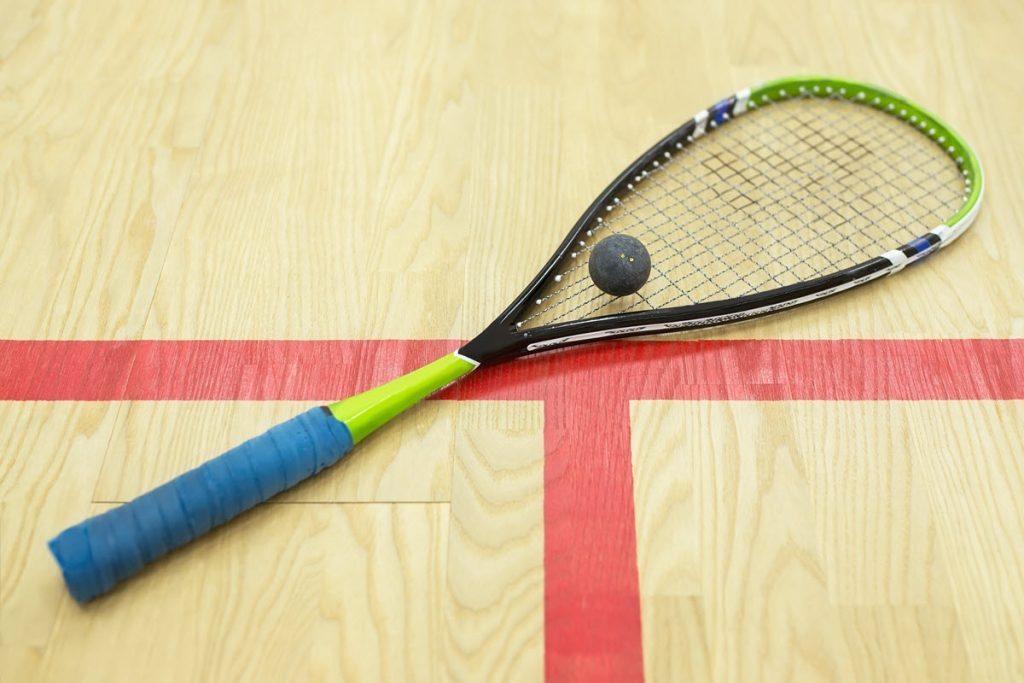While it sounds like an unpleasant personality trait, when it comes to squash, a boast is usually something other than a player telling others how great they are. In fact, a squash boast is a specific type of shot, describing how the ball travels and ricochets off the court walls.
A squash boast involves playing the ball into another wall before it hits the front wall. Most commonly, that will be the side wall, but could also be the back wall of the court. There are variations of the term including ‘reverse boast’ and ‘trickle boast’ to more specifically define a shot.

What Are The Different Types Of Boast?
As mentioned, there are a number of variations of boast in squash, meaning making use of the multiple walls of the court. Sometimes a boast is used simply to keep the ball in play, whereas other times players are strategically trying to pressure their opponents into losing the point.
Let’s have a look at the types of boasts, and what they mean during a point in squash:
- The Boast
A boast is a shot played against a wall of the court other than the front wall, which deflects onto the front wall before making its first bounce. This is a general term that includes all of the following variations in this list.
For completeness, it’s good to know that you’ll also hear a ‘standard boast’ referred to as a two wall boast, and the terms can be used interchangeably. - Trickle Boast
When a shot is played from one of the corners at the front of the court, a trickle boast is a shot choice that means the ball hits the side wall near the corner and on to the front wall very close to where the shot is played, and falls to bounce close to the impact points with the wall.
In other words, the shot, side wall impact, front wall impact and first floor bounce are all close together, meaning the shot must be played as gently as possible.
Generally, the height of the ball stays low, ideally making contact with the front wall just above the tin (marked by the lowest red line on the front wall). Together, this all means the ball is played, impacts with the court walls and bounces in the same front quadrant of the court.
Advanced players tend to be good at giving the impression that they’re going to strike the ball hard before playing a trickle boast, intending to trick the opponent into moving back from the court so they can’t get to the ball in time. - Back Wall Boast
Normally, a back wall boast is used when options are limited to keep the ball in play. As the name suggests, a back wall (or backwall) boast requires the shot to be played against the rear wall of the court, and travel through the air to hit the front wall on the court above the tin before bouncing.
As you can imagine, this requires significant power in the shot, so is generally used as a last resort to avoid losing a point. It’s rare that a back wall boast is used with a lot of finesse, as the intention is usually no more than to avoid the point being lost. - Three Wall Boast
A three wall boast means the number of walls the ball hits before bouncing on the floor.
There’s sometimes confusion with what qualifies as a three wall boast, with some believing that the two opposite side walls must for the first two impacts before the front wall is hit.
Actually, the most common three wall boast has the front wall as the middle impact of the three, so an example would be left wall, front wall, right wall making up the three wall boast before the first floor bounce.
It’s relatively rare to see a three wall boast these days, but that doesn’t mean they’re not useful to have in your skill set to pull out on occasion to mix up the game. - Reverse Boast
A reverse boast is effectively a cross court boast shot. If you’re on the right side of the court and play a boast off the left wall (or vice versa), then that’s a reverse boast.
It’s a perfectly valid shot, but many players find them difficult to execute, or opponents find them difficult to dodge! - Skid Boast
A skid boast can be played from the back of the squash court, usually from fairly tight into the corners. The trajectory of the ball is usually high, played off the side wall into the front wall, eventually aiming to bounce in the opposite back corner of the court. Due to the height required and distance the ball travels, the skid boast requires a significantly powerful strike, and is often played with notable spin to fine tune the ball’s flight and ultimate bounce.
As you can see from the short description of the range of boast shots above, there’s a lot to master about the boast shot for squash players. There’s no need to learn them all immediately if you’re new to the game, simply understanding what they are will help you to understand what shots are available on court and you’ll soon start to instinctively pick a shot to play.